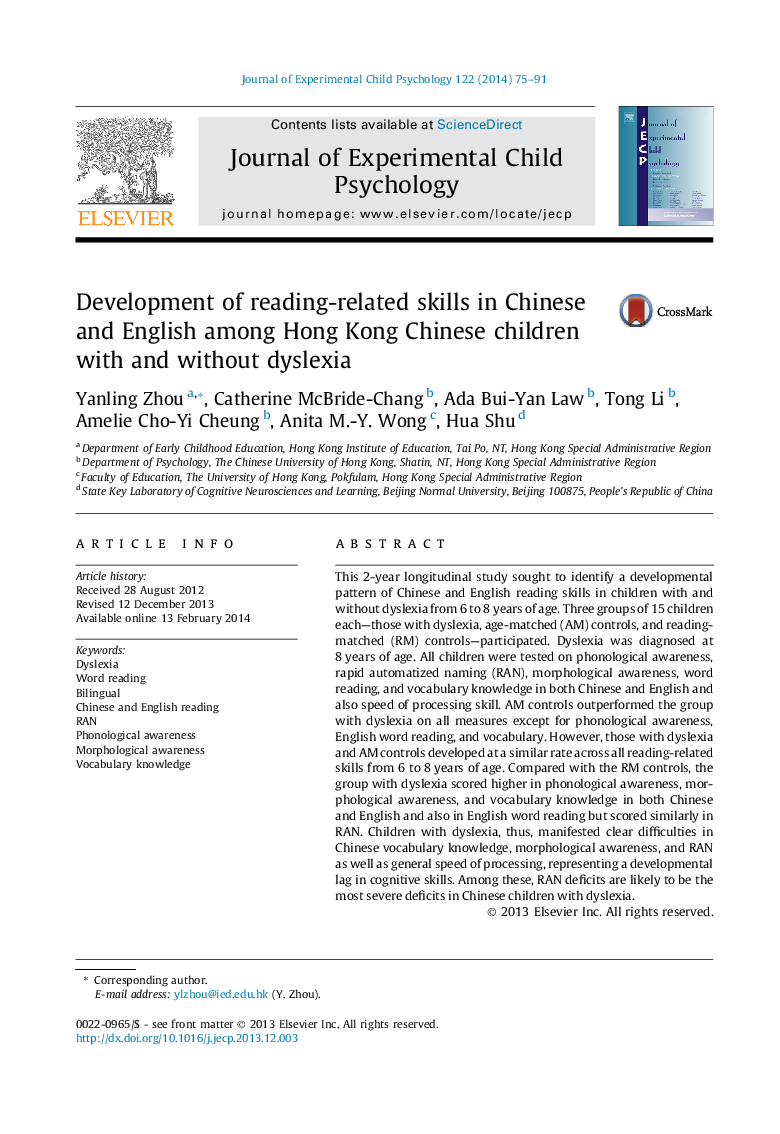| Article ID | Journal | Published Year | Pages | File Type |
|---|---|---|---|---|
| 7275585 | Journal of Experimental Child Psychology | 2014 | 17 Pages |
Abstract
This 2-year longitudinal study sought to identify a developmental pattern of Chinese and English reading skills in children with and without dyslexia from 6 to 8Â years of age. Three groups of 15 children each-those with dyslexia, age-matched (AM) controls, and reading-matched (RM) controls-participated. Dyslexia was diagnosed at 8Â years of age. All children were tested on phonological awareness, rapid automatized naming (RAN), morphological awareness, word reading, and vocabulary knowledge in both Chinese and English and also speed of processing skill. AM controls outperformed the group with dyslexia on all measures except for phonological awareness, English word reading, and vocabulary. However, those with dyslexia and AM controls developed at a similar rate across all reading-related skills from 6 to 8Â years of age. Compared with the RM controls, the group with dyslexia scored higher in phonological awareness, morphological awareness, and vocabulary knowledge in both Chinese and English and also in English word reading but scored similarly in RAN. Children with dyslexia, thus, manifested clear difficulties in Chinese vocabulary knowledge, morphological awareness, and RAN as well as general speed of processing, representing a developmental lag in cognitive skills. Among these, RAN deficits are likely to be the most severe deficits in Chinese children with dyslexia.
Keywords
Related Topics
Social Sciences and Humanities
Psychology
Developmental and Educational Psychology
Authors
Yanling Zhou, Catherine McBride-Chang, Ada Bui-Yan Law, Tong Li, Amelie Cho-Yi Cheung, Anita M.-Y. Wong, Hua Shu,
